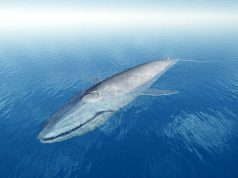Not all humans are morning people. Neither, according to a new study, are all sperm whales – at least when it comes to foraging for food.
The research, led by the University of East Anglia (UEA), has revealed the daily habits of the endangered Mediterranean sperm whale. Unmanned underwater gliders equipped with acoustic monitors recorded the sperm whale sounds, or ‘clicks’, over several months and 1000s of kilometres of ocean.
Sperm whales are highly vocal, producing distinct types of clicks for both echolocation and social interaction purposes. The study, published in the Endangered Species Research, focused on the extremely powerful and highly directional ‘usual clicks’ produced while foraging.
The recordings confirmed the whales’ widespread presence in the north-western Mediterranean Sea and identified a possible hotspot for sperm whale habitat in the Gulf of Lion, south of Marseille, where a higher rate of clicks was found. This could indicate a higher number of whales, but could also be for behavioural reasons.
In addition, continuous day and night monitoring during winter months suggests different foraging strategies between different areas. In the Ligurian Sea, north of Corsica, mobile and scattered individual whales forage at all times of day. In the Sea of Sardinia usual clicks were also detected at all times of the day.
However, in the Gulf of Lion larger groups target intense oceanographic features in the open ocean, such as fronts and mixing events, with acoustic activity showing a clear 24-hour pattern and decreased foraging effort at dawn. This could suggest they may have modified their usual foraging pattern of eating at any time to adapt to local prey availability. It provides a clue regarding sperm whale diet in this area and may be what makes it attractive to them.
There are fewer than 2500 mature individual Mediterranean sperm whales and threats to them include being caught as bycatch in fishing nets and, as recently the case off the Italian coast, entanglement in illegal fishing gear. Other dangers are ship strike and ingestion of marine debris, to disturbance by human-made noise and whale watching activities.
The study involved analysing sounds recorded by passive acoustic monitoring (PAM) sensors, previously successfully used for weather observation, on gliders deployed by the team to collect oceanographic data during winter 2012-2013 and June 2014, covering 3200 km.
Further Reading
Cauchy P, Heywood KJ, Risch D, Merchant ND, Queste BY, Testor P (2020) Sperm whale presence observed using passive acoustic monitoring from gliders of opportunity. Endang Species Res 42:133-149. https://doi.org/10.3354/esr01044

















